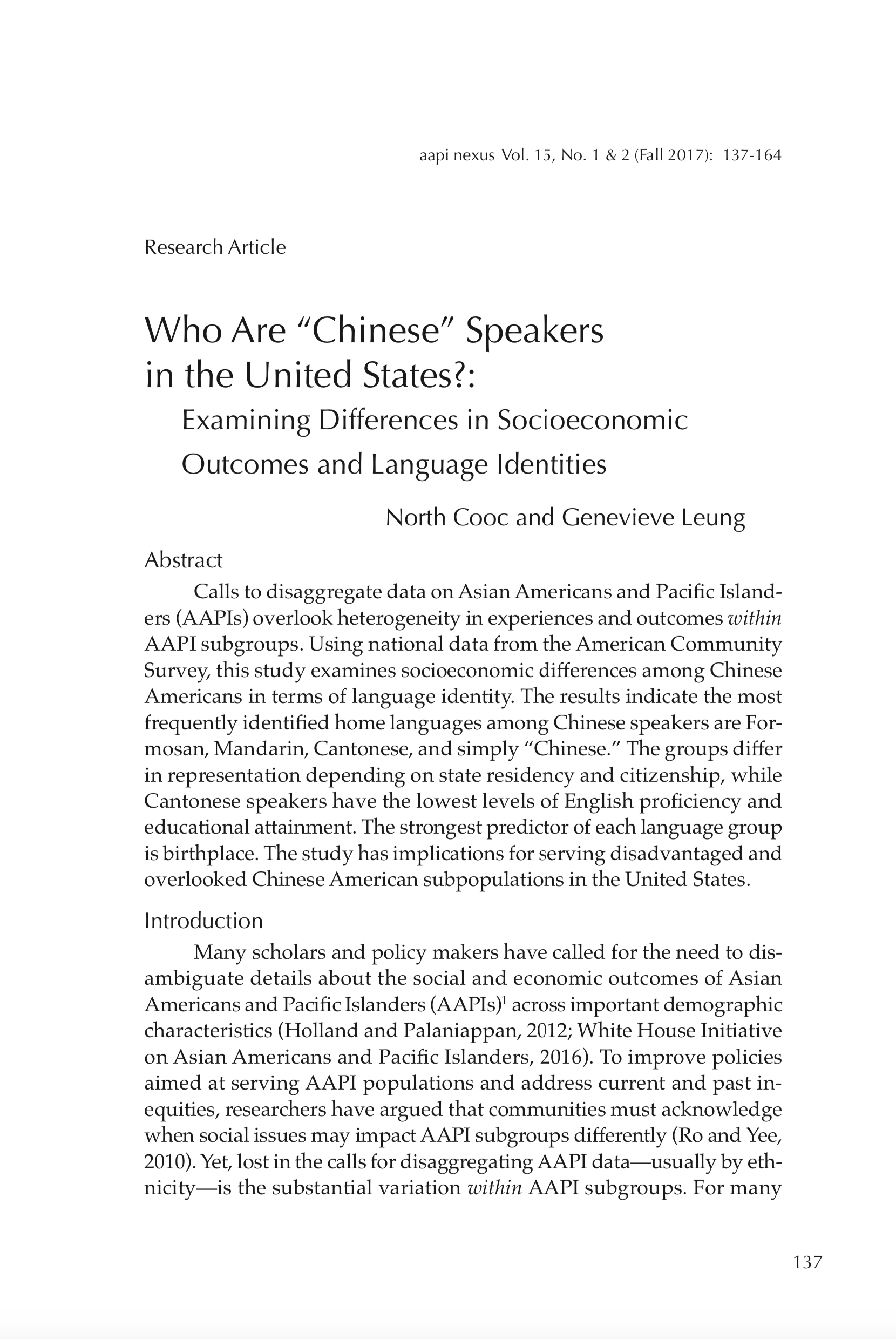“Who Are ‘Chinese’ Speakers in the United States?: Examining Differences in Socioeconomic Outcomes and Language Identities”
Volume 15:1-2, p. 137 (2017)
by North Cooc and Genevieve Leung
ABSTRACT: Calls to disaggregate data on Asian Americans and Pacific Islanders (AAPIs) overlook heterogeneity in experiences and outcomes within AAPI subgroups. Using national data from the American Community Survey, this study examines socioeconomic differences among Chinese Americans in terms of language identity. The results indicate the most frequently identified home languages among Chinese speakers are Formosan, Mandarin, Cantonese, and simply “Chinese.” The groups differ in representation depending on state residency and citizenship, while Cantonese speakers have the lowest levels of English proficiency and educational attainment. The strongest predictor of each language group is birthplace. The study has implications for serving disadvantaged and overlooked Chinese American subpopulations in the United States.
PREVIEW:

 Download
Download
Article Citation:
North Cooc and Genevieve Leung (2017) Who Are “Chinese” Speakers in the United States?: Examining Differences in Socioeconomic Outcomes and Language Identities. AAPI Nexus: Policy, Practice and Community: 2017, Vol. 15, No. 1-2, pp. 137-164.
